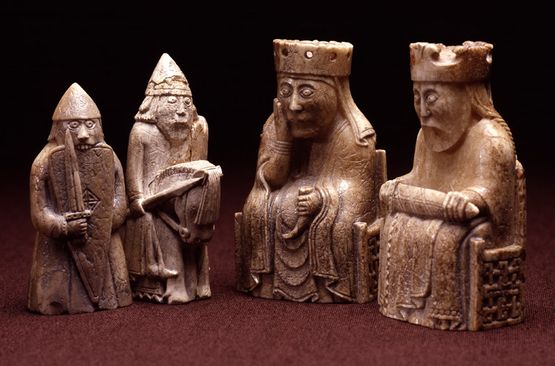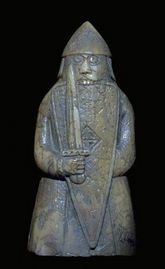The Lewis Chessmen

The Isle of Lewis was the most densely populated Viking colony in the west of Scotland. The number of Scandinavian village names are evidence of many Viking settlements - 99 out of 126 still exist today.
In 1831 a great hoard of chessmen was found in a stone cist on the beach at Uig.
There were at least 93 pieces, skilfully formed from walrus ivory and whales' teeth. It appears that they were made in Norway sometime between 1150 and 1200. They can be dated by the artistic style of the designs on the chair backs of the kings, queens and some of the bishops.
We know very little about why the Lewis Chessmen were concealed in the sand dunes, and how they were actually discovered. We do know that these unusual and beautifully carved characters from the game have become one of the most popular images of the Viking age. Each piece represents a human figure, except for the pawns, which are shaped as simple obolisks.
The knights are mounted on small horses, carrying spears and shields. Each figure has a dour expression on its face, with staring eyes and strong features. Three of the rooks are shown as the legendary savage berserkers, wild-eyed with huge teeth sunk into their shields with battle fury. Although the rook has the fierce bloodthirsty appearance we would imagine from a Viking warrior, the appearance of the kings, queens and bishops provide a more accurate image of life in the 12th century.
Fact: Of the 92 Lewis chesspieces known to us today, 11 pieces are housed at the National Museum of Scotland in Edinburgh with the other 82 in the British Museum in London.
Monica Callaghan, Hunterian Museum & Art Gallery, University of Glasgow
